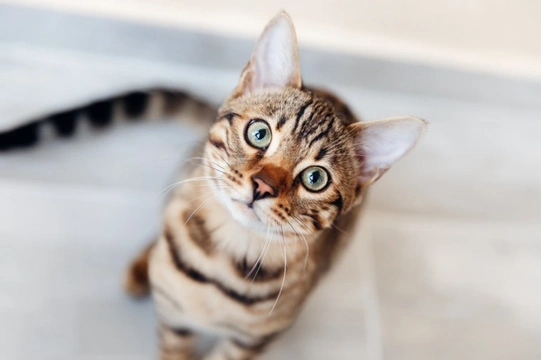
Five frequently asked questions about ringworm in cats
Many people who don’t know a lot about ringworm think of it like tapeworms, round worms, and other intestinal worms; but ringworm isn’t an intestinal parasite like these, but actually a type of skin condition. It is not even a worm at all, but a fungal infection; and ringworm in cats is relatively common and quite easily spread once one cat has been infected with it.
Whilst ringworm is certainly not one of the most serious health conditions in cats, it can be tricky to clear up and this can take some time, and there are a lot of misapprehensions about ringworm in cats too that often confuse cat owners.
If you want to know about ringworm in cats or are looking for a simple guide to cat ringworm and what you need to know about it, read on for the answers to five of the most frequently asked questions about ringworm in cats.
What exactly is ringworm in cats?
Ringworm is not a worm in the way most people think of it; it’s not something that lives in your cat’s tummy, or that you treat by giving them a worming pill.
Ringworm is a type of fungal infection that can develop on the skin, and as such it is classed as a contagious skin condition. It’s called ringworm because it forms a round or ring-shaped pattern on the skin, and each “ring” spreads outwards and gets larger over time, with the outer borders being red and forming the signature ring shape.
Ringworm is a type of fungus that feeds on a certain protein called keratin that is found in the skin, living on the surface of the skin itself and possibly just under the surface too. The skin temperature and suppleness of skin provides the perfect environment for ringworm to thrive, making your cat’s body an appealing host!
How to cats catch ringworm?
Ringworm is very contagious, and if you have more than one cat or even if your cat comes into contact with others in the local area, it is very easily passed between them.
Direct physical contact with another cat that has ringworm is the easiest way for ringworm to be passed from one cat to another, but this is not the only way a cat can catch ringworm.
As the skin disease is contagious, it is fairly easy for your cat to get ringworm by coming into contact with another infected cat or being in an environment where ringworm has been present.
Cats can even catch ringworm from shed fur and skin follicles, and this is particularly a problem in longhaired cats as the spores of the ringworm fungus are easily picked up in the fur, and have more fur to retain it.
Can humans catch ringworm from cats?
Ringworm is not exclusive to cats, and a whole host of other animal species can catch it too. This includes dogs and also humans, and so dogs, cats and humans can all pass ringworm back and forth between themselves, as well as many other mammals as well.
If you have a multi-pet household it is very hard to prevent all of your animals catching ringworm if one is infected, and it is also easily spread to people as well. Whilst following your vet’s advice on avoiding contracting ringworm if one of your pets has it can lessen the chances of this happening, this is not fool proof.
However, ringworm is not at all painful and doesn’t tend to be itchy or uncomfortable – just somewhat unsightly, and it is not a serious health condition nor one that can lead to other problems – and your doctor or pharmacist can provide you with the appropriate topical medication to clear it up if you do catch it.
What are the symptoms of ringworm in cats?
Ringworm in cats is quite distinctive if you know the symptoms to look out for. First of all, your cat’s fur is apt to take on a prominent or raised appearance in distinctive small circle shapes, and underneath their fur, will be the signature reddish ring shape.
After a while the fur in these areas will fall out, and the underlying area may appear simply reddish with a distinctive border, or even crusty and scabby, although this is rarely painful or irritating for your cat. Ringworm rings spread outwards and get larger over time, and so untreated, can even join up with each other.
How is ringworm in cats treated?
Ringworm in cats will usually go away on its own if left for long enough, as their immune system naturally fights it off. However, they run the risk of passing on the infection to other pets and people too during this time, and so your vet will usually prescribe antifungal medications and potentially also topical antifungal creams or shampoo to speed up the process.
Even after successful treatment, cats can become reinfection with ringworm again, and so a thorough clean of your home and soft furnishings and replacement of anything you cannot properly clean is strongly recommended.



